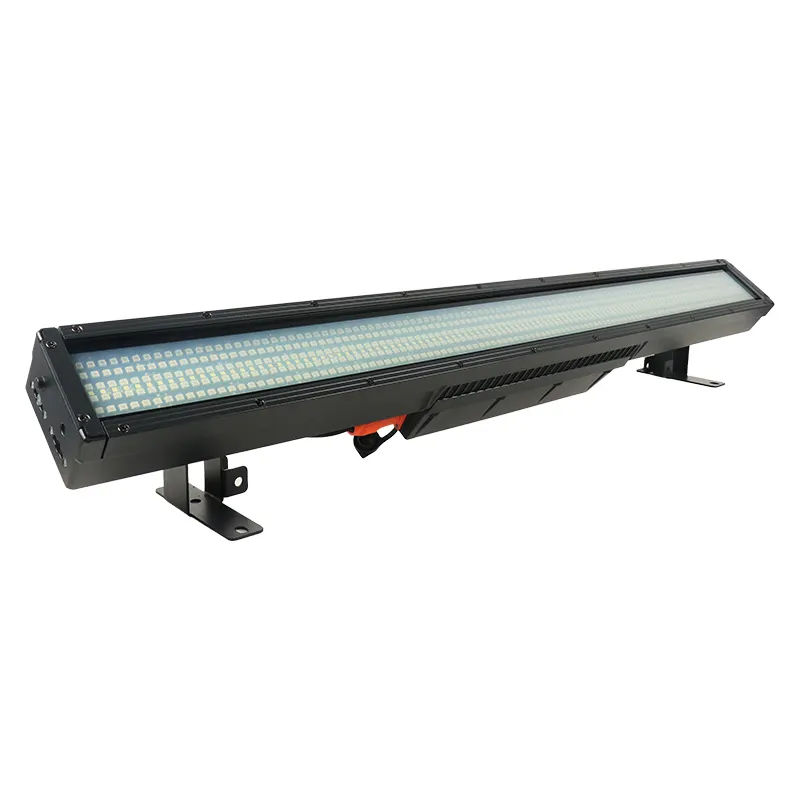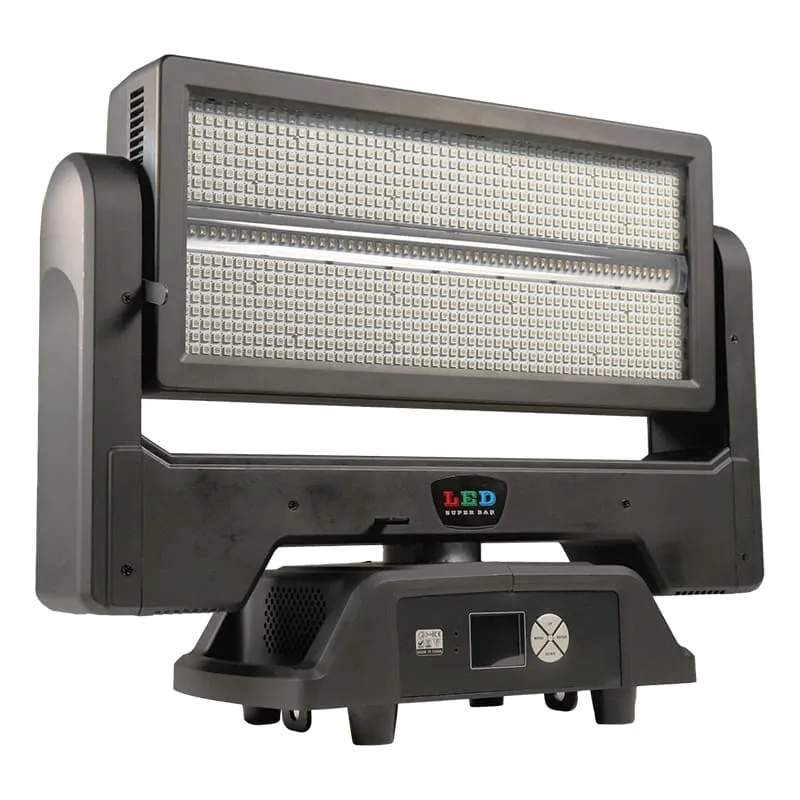The Electrifying Impact of Strobes in Live Entertainment
The pulsating flash of strobe lights has become an inseparable element of modern live entertainment, transforming ordinary venues into otherworldly spaces of pure energy and excitement. These powerful lighting effects create an immersive atmosphere that connects audiences with performers, building unforgettable moments that resonate long after the final beat fades away. In the ever-evolving landscape of live events, strobe lights stand as pillars of visual innovation, capable of turning any performance into a multi-sensory spectacular.
The Science Behind Strobe Light Effects
Understanding the Persistence of Vision
Strobe lights operate on a fascinating principle known as the persistence of vision. When these lights flash at specific frequencies, they create an illusion of frozen motion or slow-movement effects. Our eyes retain each flash of light for a fraction of a second, and when combined with darkness, this creates a distinctive visual experience that can make dancers appear to move in slow motion or suspend them mid-air.
The human brain processes these rapid bursts of light in a unique way, creating a disconnect between what we see and our perception of time. This phenomenon explains why strobe lights can make fast movements appear choppy or segmented, adding an entirely new dimension to dance performances and musical acts.
The Psychology of Light and Motion
The psychological impact of strobe lights extends beyond mere visual effects. These dynamic lighting patterns can synchronize with our brain's natural rhythms, potentially inducing heightened states of awareness and emotional response. When properly coordinated with music, strobe lights can create a powerful synesthetic experience where visual and auditory sensations merge into one cohesive impression.
Research has shown that the strategic use of strobe lights can influence crowd energy levels, heart rates, and even the perceived intensity of musical performances. This psychological manipulation of light and dark helps create the electric atmosphere that defines modern concert experiences.
Technological Advancements in Strobe Lighting
Modern LED Strobe Solutions
The evolution of strobe light technology has brought remarkable improvements to the live entertainment industry. LED strobe lights have revolutionized the field, offering unprecedented control over flash patterns, intensity, and color variations. These modern systems consume less power, generate less heat, and provide longer operational lifespans compared to traditional xenon-based strobes.
Advanced LED strobe systems now incorporate DMX control protocols, allowing lighting designers to create complex sequences that synchronize perfectly with music and other stage effects. The precision control offered by contemporary strobe lights enables subtle effects that were impossible with older technology, from gentle shimmer effects to intense, room-filling bursts of light.
Integration with Digital Control Systems
Today's strobe lights seamlessly integrate with sophisticated digital control systems, allowing for precise programming and real-time adjustments. Lighting designers can now create elaborate shows where strobe effects respond instantly to musical cues, crowd reactions, or pre-programmed sequences. This level of integration has elevated the role of strobe lights from simple flash effects to sophisticated storytelling tools.
The incorporation of wireless control systems and networked lighting protocols has made it possible to coordinate massive arrays of strobe lights across large venues, creating synchronized spectacles that can transform entire arenas into unified light shows.
Creative Applications in Live Performance
Choreographing with Light
Professional lighting designers approach strobe lights as choreographic elements, using them to accent specific moments in performances and create visual rhythm. The strategic placement and timing of strobe effects can emphasize musical peaks, highlight dramatic moments, and guide audience attention throughout a show.
In dance events, strobe lights serve as virtual dance partners, creating optical illusions that complement performers' movements. Carefully timed strobe sequences can make dancers appear to float, multiply, or move in impossible ways, adding an extra layer of magic to live performances.
Building Atmospheric Intensity
One of the most powerful applications of strobe lights is their ability to build and release tension in live performances. By varying the frequency and intensity of strobe effects, lighting designers can create crescendos of visual energy that parallel musical buildups. This synchronization of light and sound creates immersive moments that physically engage audiences in the performance.
The contrast between periods of conventional lighting and strobe effects can also create dynamic transitions between different parts of a show, helping to pace the overall experience and maintain audience engagement throughout longer events.
Safety and Best Practices
Professional Implementation Guidelines
While strobe lights are powerful tools for enhancing live events, their implementation requires careful consideration and professional expertise. Proper mounting, power distribution, and control system setup are essential for both safety and optimal performance. Professional lighting designers must also consider factors such as beam angles, coverage patterns, and potential interference with other lighting elements.
Regular maintenance and testing of strobe light systems ensure reliable operation and prevent potential technical issues during live events. This includes checking flash tubes, verifying control connections, and updating programming as needed to maintain perfect synchronization with other show elements.

Audience Consideration and Health Concerns
Responsible use of strobe lights includes clear communication about their presence in shows and consideration for audience members who may be sensitive to these effects. Professional venues typically post warnings about strobe light use and maintain strict guidelines about maximum flash frequencies and durations to ensure audience safety and comfort.
Modern strobe light controllers often include built-in safety features that prevent dangerous flash patterns and allow for quick disabling if necessary. These precautions help ensure that the enhanced energy and excitement created by strobe effects remain enjoyable for all attendees.
Frequently Asked Questions
How do strobe lights synchronize with music during live performances?
Strobe lights are synchronized with music through sophisticated DMX control systems and digital audio interfaces. Lighting designers can program specific effects to trigger automatically with musical cues or manually control strobes in real-time during performances. Many modern systems also use MIDI signals or timecode to ensure perfect synchronization between lighting and audio elements.
What makes LED strobe lights different from traditional strobe lights?
LED strobe lights offer numerous advantages over traditional xenon-based strobes, including lower power consumption, reduced heat output, longer lifespan, and more precise control over flash patterns and intensity. They also provide the ability to change colors and create more complex effects while maintaining reliability and operational efficiency.
Are strobe lights safe for all concert attendees?
While strobe lights are generally safe for most people, they can affect individuals with photosensitive epilepsy or other light sensitivities. Professional venues and events always provide advance warnings about strobe light use and follow industry guidelines regarding flash frequencies and durations to ensure audience safety. Anyone with known sensitivities should check venue policies and take appropriate precautions.

